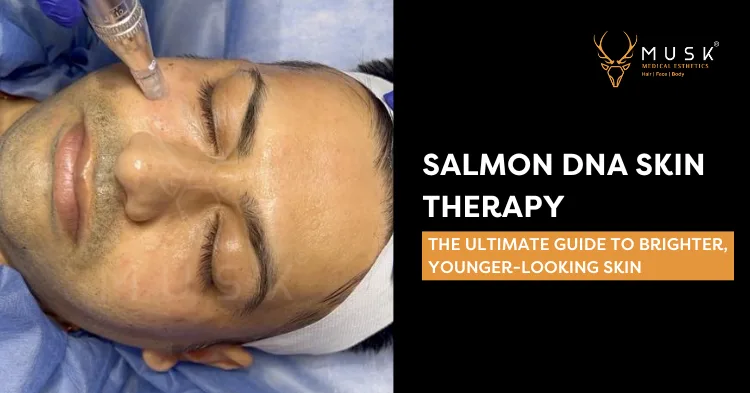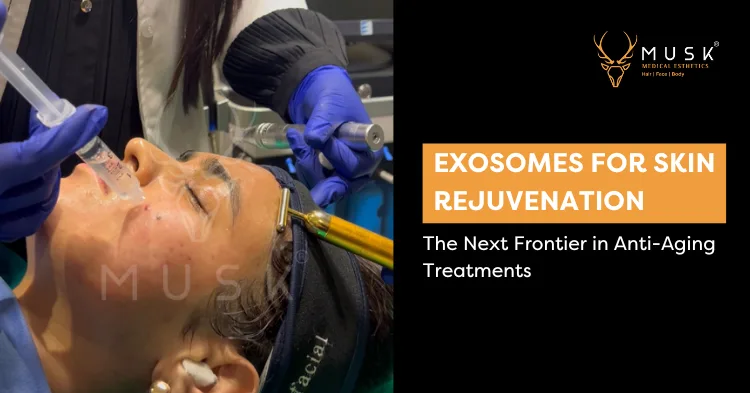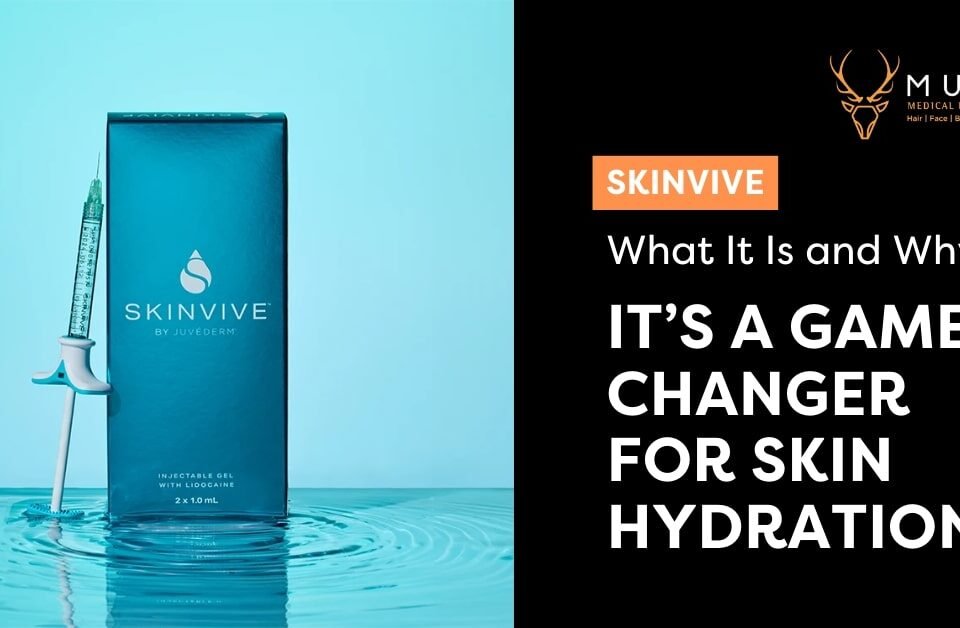Hydrafacials vs. Chemical Peels vs. Cryofacials: Which One is Best for Your Skin?

Introduction to Skincare Treatments
Achieving a radiant, youthful, and blemish-free complexion has become easier with professional skincare treatments. These advanced procedures, offered by trusted medical aesthetics clinics, use the latest technologies and proven techniques to treat various skin concerns effectively.
Among the many skincare treatments available, three stand out for skin rejuvenation: Hydrafacials, Chemical Peels, and Cryofacials. Each offers unique benefits and targets different skin concerns. Understanding their differences can help you choose the best option for your needs.
With so many choices available, it can be overwhelming to determine which treatment is best suited for your specific skin concerns and goals. This comprehensive guide aims to provide an in-depth comparison of Hydrafacials, Chemical Peels, and Cryofacials, empowering you to make an informed decision on a journey towards achieving your desired complexion.
Understanding the Basics: What Are These Treatments?
1. What is a Hydrafacial?
A Hydrafacial is a revolutionary, non-invasive facial treatment that deeply cleanses, exfoliates, extracts impurities, and intensely hydrates the skin. This multi-step procedure utilizes advanced vortex-fusion technology, which creates a powerful vortex to effectively lift and remove dirt, oil, and dead skin cells from the pores.
The Hydrafacial process begins with a gentle exfoliation that removes the outermost layer of dead skin cells, revealing a brighter and more radiant complexion. This is followed by a painless suction process that extracts blackheads, whiteheads, and other impurities from the pores, leaving the skin clean and refreshed.
After the extraction phase, the Hydrafacial delivers a series of nourishing serums deep into the skin. These serums are infused with powerful antioxidants, peptides, and hydrating agents that replenish the skin’s moisture levels and promote a healthy, glowing appearance.
2. What is a Chemical Peel?
A chemical peel is a skin resurfacing treatment that involves the application of chemical solutions, typically acids, to the skin. These acids work by exfoliating and removing the damaged outer layers of the skin, revealing the fresh, smoother skin underneath.
Chemical peels come in different strengths, ranging from superficial to deep peels. The type of peel used depends on the individual’s skin concerns and desired results.
- Superficial Peels: These are the mildest form of chemical peels, using alpha-hydroxy acids (AHAs) like glycolic acid or lactic acid. Superficial peels are suitable for treating mild skin issues like dullness, uneven texture, and fine lines.
- Medium Peels: Medium peels use trichloroacetic acid (TCA) or a combination of acids to penetrate deeper into the skin. They are effective in treating age spots, moderate wrinkles, and acne scars.
- Deep Peels: Deep peels, such as the phenol peel, are the strongest and most invasive type of chemical peel. They are typically used to treat severe skin conditions like deep wrinkles, precancerous growths, and significant sun damage.
Chemical peels are highly effective in reducing acne scars, pigmentation irregularities, fine lines, and wrinkles. The exfoliation process stimulates collagen production, improving the skin’s texture and overall appearance.
3. What is a Cryofacial?
A Cryofacial, also known as a “cold facial,” is a revolutionary skincare treatment that harnesses the power of extreme cold temperatures to rejuvenate and revitalize the skin. This innovative procedure involves the controlled application of liquid nitrogen, a super-cooled substance, to the face.
The primary goal of a Cryofacial is to tighten and refresh the skin’s appearance by stimulating collagen production. Collagen is an important protein that plays a crucial role in maintaining skin elasticity and firmness. As we age, our body’s natural collagen production slows down, leading to the formation of fine lines, wrinkles, and a loss of skin tone.
During a Cryofacial treatment, the liquid nitrogen is carefully applied to the skin’s surface, causing a brief and controlled cooling effect. This extreme cold temperature triggers a natural response in the body, prompting it to increase collagen production to repair and rejuvenate the treated areas.
Why Should You Consider These Treatments? (Benefits & Results)
1. Benefits of Hydrafacials
- Deep Hydration & Instant Glow: Infuses the skin with nourishing serums, leaving it plump, dewy, and radiant.
- Unclogs Pores & Removes Blackheads: Uses vortex-fusion technology to deeply cleanse and extract impurities, preventing breakouts.
- Anti-Aging Benefits: Exfoliates dead skin cells, stimulates collagen production, and reduces fine lines and wrinkles.
- Protects Against Environmental Stressors: Antioxidant-rich serums help shield the skin from damage and premature aging.
- Improves Pigmentation & Skin Tone: Helps fade dark spots, sun damage, and uneven skin tone for a brighter complexion.
- Enhances Skin Texture & Radiance: Deep hydration improves overall smoothness and glow.
2. Benefits of Chemical Peels
- Removes Dead Skin Cells: Exfoliates the top layer to reveal fresh, healthier skin. This process helps improve overall skin clarity and smoothness.
- Improves Skin Texture & Brightness: Enhances skin glow by removing dull, uneven layers. It leaves the skin feeling soft and refreshed.
- Reduces Fine Lines & Wrinkles: Stimulates skin renewal to smooth out aging signs. This helps achieve a more youthful and firm appearance.
- Fades Hyperpigmentation & Dark Spots: Targets melanin buildup to lighten dark spots. It effectively reduces sun damage and uneven skin tone.
- Smooths Acne Scars: Helps fade scars by promoting new skin cell growth. Over time, it creates a more even and refined complexion.
- Boosts Collagen Production: Encourages collagen formation for firmer skin. This helps restore elasticity and reduce sagging.
- Evens Skin Tone: Corrects discoloration for a balanced complexion. It works well on pigmentation issues like melasma and age spots.
- Rejuvenates & Refreshes the Skin: Improves skin health by deeply renewing its surface. It results in a vibrant and youthful glow.
3. Benefits of Cryofacials
- Tightens Pores and Reduces Puffiness: Cryofacials tighten the skin, reducing enlarged pores and puffiness. This results in a smoother, more toned appearance.
- Soothes Inflammation and Redness: The cold therapy helps calm irritated skin, reducing redness and inflammation. It’s an ideal treatment for conditions like rosacea or acne.
- Improves Skin Elasticity and Stimulates Collagen Production: Cold therapy stimulates collagen and elastin production, enhancing skin firmness and texture. This leads to a more youthful and rejuvenated complexion.
- Enhances Circulation: Cryofacials improve blood circulation, delivering more oxygen and nutrients to the skin. This helps promote a healthy, glowing complexion.
- Reduces Fine Lines and Wrinkles: By boosting collagen production, Cryofacials help minimize the appearance of fine lines and wrinkles, offering a smoother and more youthful look.
- Non-Invasive & Quick Recovery: As a non-invasive treatment, Cryofacials have minimal downtime. Clients can enjoy the benefits of a refreshed look with no recovery time required.
How Do These Treatments Work?
| Treatment | Procedure | Time Required | Downtime | Best For |
|---|---|---|---|---|
| Hydrafacial | Cleansing, exfoliation, extraction, hydration | 30-45 min | None | Dry, dull, congested skin |
| Chemical Peel | Acid application, exfoliation, peeling | 30-60 min | 3-7 days | Acne scars, pigmentation, uneven tone |
| Cryofacial | Cold therapy using liquid nitrogen | 15-30 min | None | Redness, inflammation, tightening |
Who Should Choose What?
When it comes to choosing the right facial treatment, it’s essential to consider your specific skin concerns and desired results. Here’s a breakdown of which treatment might be the best fit for different skin types and issues:
- For Dry & Dull Skin → Hydrafacial: If you’re struggling with dehydrated, lackluster skin, a Hydrafacial is an excellent choice. It deeply cleanses and exfoliates while delivering intense hydration, leaving your skin plump, glowing, and revitalized.
- For Acne & Pigmentation → Chemical Peel: If you’re dealing with acne, acne scars, hyperpigmentation, or an uneven skin tone, a chemical peel might be the way to go. By removing the outer layers of damaged skin, it reveals a fresher, more even complexion while also improving texture and minimizing pores.
- For Redness & Puffiness → Cryofacial: If you’re looking to reduce inflammation, redness, or puffiness, a Cryofacial can be a game-changer. The intense cold therapy constricts blood vessels, reducing swelling and redness, while also tightening pores for a refreshed, rejuvenated appearance.
- For Instant Glow & Event Preparation → Hydrafacial: If you have a special occasion coming up and want to look your absolute best, a Hydrafacial is an excellent choice. It provides an immediate radiant glow, plumping and smoothing the skin for a flawless, photo-ready complexion.
- For Long-Term Skin Rejuvenation → Chemical Peel: If you’re looking for more than just a quick fix and want to address deeper skin concerns like fine lines, wrinkles, and sun damage, a chemical peel is a powerful option. It triggers collagen production and cell renewal for long-lasting skin rejuvenation.
- For Sensitive & Inflamed Skin → Cryofacial: If you have sensitive or inflamed skin that doesn’t respond well to harsh treatments, a Cryofacial can be a soothing and gentle solution. The cooling effect helps calm redness and irritation, leaving your skin feeling refreshed and comfortable.
Remember, while these guidelines can help you narrow down your options, it’s always best to consult with a professional skin care expert who can assess your unique skin and recommend the most suitable treatment plan.
Side Effects & Precautions
1. Hydrafacial Side Effects & Precautions
While Hydrafacials are generally safe for most skin types, there are a few potential side effects to be aware of:
- Mild redness or flushing of the skin immediately after the treatment, which typically subsides within a few hours.
- Temporary tightness or dryness of the skin, as the treatment involves exfoliation and extraction.
- Slight tingling or stinging sensation during the treatment, particularly during the acid peel step.
To minimize any potential side effects, it’s essential to follow the aesthetician’s instructions and avoid sun exposure or strenuous activities immediately after the treatment.
2. Chemical Peel Side Effects & Precautions
Chemical peels can cause more significant side effects compared to Hydrafacials, depending on the peel’s strength and depth. Common side effects include:
- Peeling or flaking of the skin, which can last for several days to a week, depending on the peel’s intensity.
- Redness, swelling, and slight discomfort or burning sensation during and immediately after the treatment.
- Increased sensitivity to sunlight, making it crucial to use broad-spectrum sunscreen and avoid direct sun exposure.
It’s important to follow the post-care instructions provided by your esthetician, such as using gentle cleansers, moisturizers, and avoiding harsh products or activities that could irritate the skin during the peeling process.
3. Cryofacial Side Effects & Precautions
Cryofacials are generally well-tolerated, but there are a few potential side effects to consider:
- Temporary numbness or tingling sensation in the treated area, which typically subsides within a few minutes.
- Mild redness or flushing of the skin immediately after the treatment, which should resolve quickly.
- Rare cases of cold sensitivity or allergic reactions in individuals with extremely sensitive skin.
To minimize any potential side effects, it’s essential to communicate any concerns or sensitivities with your esthetician before the treatment. Additionally, following post-care instructions, such as avoiding excessive heat or cold exposure, is recommended for optimal results.
Why Choose Musk Clinic for Skin Treatments?
At Musk Clinic, we prioritize your safety, comfort, and satisfaction by offering advanced technology and USFDA-approved treatments. Our advanced facility is equipped with the latest medical-grade equipment and adheres to the highest standards of hygiene and professionalism.
Our team of board-certified experts brings years of experience and expertise to every treatment. They are dedicated to understanding your unique skin concerns and creating personalized treatment plans customized to your specific needs. With their in-depth knowledge and commitment to continuous education, you can trust that you are in capable hands.
We believe in a customer-centric approach, ensuring that your experience at Musk Clinic is nothing short of exceptional. From the moment you walk through our doors, our staff will make you feel welcomed and prioritize your comfort throughout the entire process.
Whether you choose a Hydrafacial, Chemical Peel, or Cryofacial, you can rest assured that our advanced technology and skilled professionals will deliver outstanding results, leaving you with a radiant and rejuvenated complexion.
Conclusion
Choosing the right facial treatment depends on your unique skin needs. Hydrafacials hydrate and glow, Chemical Peels address acne scars and aging, while Cryofacials reduce puffiness and redness.
At Musk Clinic, we personalize treatments to suit your skin goals. Contact us today to book your consultation and begin your journey to radiant, healthy skin!
FAQs
1. Is a Hydrafacial better than a Chemical Peel?
It depends on your skin concerns. Hydrafacials are great for hydration, cleansing, and instant glow, while chemical peels target deeper issues like acne scars and pigmentation for long-term improvements.
2. Can Cryofacials help with acne?
It depends on your skin concerns. Hydrafacials are great for hydration, cleansing, and instant glow, while chemical peels target deeper issues like acne scars and pigmentation for long-term improvements.
2. Can Cryofacials help with acne?
Cryofacials can reduce inflammation and redness associated with acne and help with acne scars, but they are not the primary treatment for acne. Chemical peels may be more effective for acne-specific concerns.
3. How often should I get a Hydrafacial or Chemical Peel?
Hydrafacials can be done every 4-6 weeks, while chemical peels vary: superficial peels every 4-6 weeks, medium peels every 6-12 months, and deep peels once a year.
4. Are there any side effects of these treatments?
Side effects may include mild redness, temporary tightness, peeling, or tingling. Following aftercare instructions minimizes these effects.
5. Which treatment has the least downtime?
Hydrafacials and Cryofacials have minimal downtime, while chemical peels may require several days to a week for recovery due to peeling and sensitivity.











